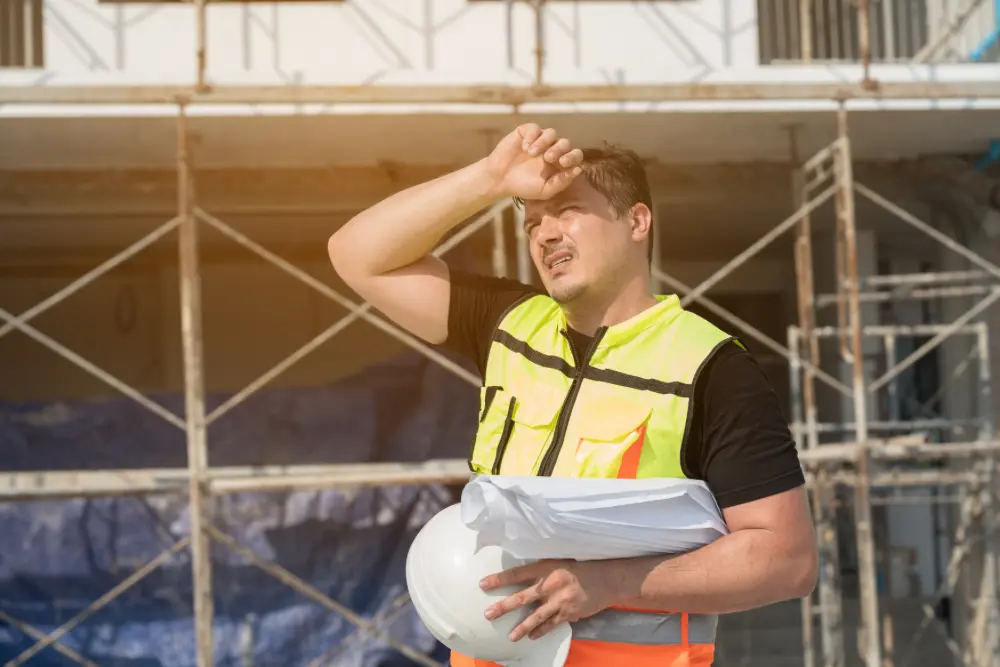Contractors and unions alike have said their piece about a proposed rule aiming to protect workers in the United States from the health risks of extreme heat.
The U.S. Dept. of Labor Occupational Safety and Health Administration (OSHA) held a multiday virtual public hearing earlier this summer as part of the rulemaking process for possible workplace heat injury and illness prevention standards.
Published last summer, the proposed rule would require employers to identify heat-related hazards and implement both engineering controls and safe work practices, using two distinct trigger thresholds. It would also outline procedures for establishing a heat emergency response plan, conducting training for employees and supervisors, and maintaining proper documentation.
The proposed rule applies to a variety of industries, but construction is perhaps the most important due to it being among the leading industries for workplace heat-related illnesses and injuries. According to Bureau of Labor Statistics data, between 2021 and 2022 there were 620 construction workplace injuries that resulted from exposure to environmental heat and required at least one day away from work, and 29 deaths.
OSHA says those numbers are likely lower than the true statistics due to underreporting.

“Heat-related illnesses are significantly underreported for multiple reasons, including a lack of information, communication and fear of retaliation,” Ryan Papariello, safety and health specialist at the Laborers' Health & Safety Fund of North America, told Engineering News-Record. “…We must shift from a reactive to proactive strategy that centers on worker health and safety.”
According to ENR’s reporting, contractor groups have criticized the proposed rule for using what they call “a one-size-fits-all approach” to heat safety. The Associated General Contractors of America and the Associated Builders and Contractors are among the groups calling on OSHA to implement performance-based requirements in the standard, rather than prescriptive measures.
“OSHA should recognize, and I believe has recognized in the past, that the construction industry faces unique challenges compared to those in other industries,” said Kevin Cannon, director of safety and health services at AGC.
Cannon added that construction should be exempt from the temperature record keeping requirements included in the proposed rule.
“Our belief is that this data has limited utility in predicting environmental conditions on future projects and would not necessarily be considered representative sampling or objective data,” he told ENR.
The proposed rule states that employers would need to provide water, a break area and acclimatization for new or returning workers at 80°F. At 90°F, they would also need to provide 15-minute rest breaks every two hours and implement a supervisor or buddy system to observe for heat-related health symptoms.
Joe Xavier, senior director of health and safety at ABC, told ENR that provisions like requiring rest breaks “are impractical and would be exceedingly difficult to manage on construction sites due to time and schedule-based activity interdependencies.” He cited how mandatory breaks for crews placing concrete could cause a strain for contractors managing the timing of trucks, the concrete pour rate and other factors, among other examples of the challenges these types of rules would create.
“ABC recommends that OSHA allows supervisors and employees to work together and coordinate safe approaches for rest breaks focusing on individual employees’ needs, the nature of the work and the specific workplace conditions,” he said.
But Papariello pointed to the seven states that already have some workplace heat standards in place, and the additional ones currently considering them. Like the proposed federal rule, most of the state standards utilize prescriptive approaches to protect workers from extreme heat.
“[They] have shown that feasibility and flexibility are not a barrier,” he said. “In fact, as the more recently developed heat standards illustrate, these can go hand in hand.”
Other states, however, have made moves to reduce the amount of protection they require employers to offer their workers.
And in 2023, Texas legislators passed a bill that, among other effects, eliminated ordinances in Austin and Dallas that established mandatory water breaks for construction workers.
While commenting on OSHA’s proposed rule during a panel in June, Tarn Goelling, international representative at the International Brotherhood of Electrical Workers, shared a story about an electrical worker in Austin, Texas, who returned to his hot jobsite after taking some time off. The worker became pale, confused and dizzy over the course of his workday. He rested in the shade but still felt unwell and left early.
While driving home, the worker passed out and flipped his truck after suffering from heat stroke.
“[The worker was] not properly acclimated to working in extreme heat,” Goelling said at the panel, per ENR’s reporting. “…Many of the injuries and illnesses resulting from exposures to these heat hazards on the job are easily preventable with an appropriate heat illness prevention plan.”
GPRS Is Committed to You & Your Team's Safety
At GPRS, safety is always on our radar.
That’s more than just a catchy tagline; through our sponsorship of safety initiatives such as Concrete Sawing & Drilling Safety Week, Construction Safety Week, and Water & Sewer Damage Awareness Week, we aim to ensure that every employer and employee in the construction industry is equipped with the knowledge and resources they need to stay safe while building for our nation’s future.
Click here to learn more about GPRS’ safety initiatives and partnerships.



.svg)